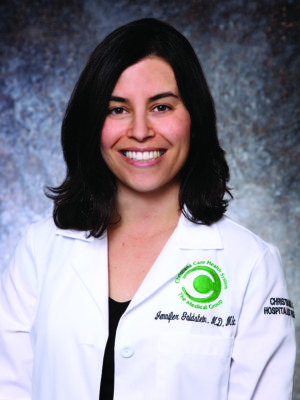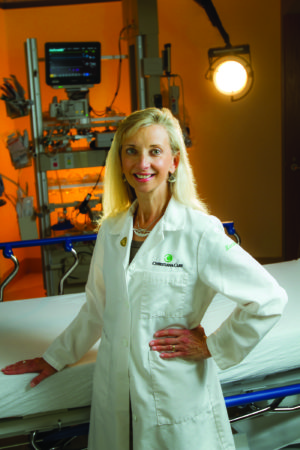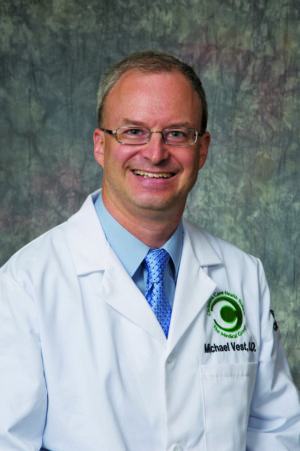Value Institute’s 2018 spring symposium focuses on how to optimize hospital workflow
By embodying the values of excellence and love, Christiana Care is striving for a collaborative environment where individuals work closely as a team of professionals and feel safe in solving problems so as to better meet the needs of patients.
And thanks to the strong relationship of the Value Institute with Christiana Care’s service lines, Delaware’s leading hospital system is well-positioned to offer high-quality care while using resources wisely and effectively, according to one of the nation’s foremost experts in how hospitals can achieve optimal workflow design.

“It’s humbling to see how patient-centered Christiana Care really is,” said Anita Tucker, DBA, associate professor in the Questrom School of Business and Dean’s Research Scholar at Boston University.
Dr. Tucker was the keynote speaker for the Value Institute’s 2018 Spring Symposium, which drew 255 attendees on June 1 at the John H. Ammon Medical Educational Center. Her address carried a provocative title — “How Hospitals Can Learn from Failure” — and it centered on missing information, supplies or equipment necessary to complete work tasks, all of which erode staff efficiency and contribute to momentary “operational failure.”
Originally trained as an industrial engineer, Dr. Tucker applied her understanding of workplace design to the study of nurses and the workarounds they use when they do not have all that is immediately required to complete their tasks. Operational failures manifest as minor glitches that usually take a few minutes to work around, and Dr. Tucker’s research finds that a series of daily glitches can use up to 10 percent of staff time.
The good news from Dr. Tucker’s studies is that unit managers, who are readily available and motivated to resolve issues, can provide staff with the psychological safety to bring up problems so they can be fixed and glitches do not recur. “I think, as an organization, you are well-positioned to look into these kinds of problems if they arise,” said Dr. Tucker.
In addition to hearing of Dr. Tucker’s findings, symposium attendees learned about Christiana Care clinicians working with Value Institute partners on three research projects dealing with efforts to improve Emergency Department efficiency, evaluate a new hospital screening tool for opioid withdrawal and understand the risk for out-of-pocket costs for Medicare patients admitted under observational and inpatient status.
The generation and distribution of research discoveries, Value Institute Corporate Director Mia A. Papas said, helps the Value Institute support Christiana Care in its pursuit of the Quadruple Aim: improved population health, better patient experience, lower overall cost of care and better provider experience.
“Everything we do at the Value Institute is centered on enhancing the health of the population we serve,” Papas said. “Our partnerships with our caregivers help us unleash the power of data, analytics and knowledge to improve the lives of our neighbors and the overall health of our community.”
Researchers with three ongoing Value Institute research projects gave reports as “Notes from the Field.”

Jennifer Goldstein, M.D., MSc, director of resident research for the Department of Medicine, and Zugui Zhang, Ph.D., director of biostatistics, Value Institute, reported on “Utilization and Out-of-Pocket Spending of Hospital Outpatient/Observation Care for Low-Income Medicare Beneficiaries.”
They said that people covered by Medicare can be admitted to the hospital as either inpatients or observation patients, with each having separate billing rules. While the two sets of patients are indistinguishable within hospital units, an analysis of Medicare claims data for 2013 shows that observation patients are at risk for significant out-of-pocket costs, while inpatients have more financial protection. In a second study, the researchers learned that, among post-acute care observation patients, many “physically qualified” for skilled rehabilitation services but most went home, and the outcomes were worse for these patients than those receiving follow-up services.

Linda Laskowski-Jones, MS, APRN, ACNS-BC, CEN, FAWN, FAAN, vice president, Emergency & Trauma Services, and Tze Chiam, Ph.D., associate director, health systems optimization, Value Institute, reported on “Emergency Department Redesign – Where Clinical, Operations and Engineering Converge.”
They looked at how to optimize patient flow in the Emergency Department using predictive modeling, time-motion studies and computer simulation. To improve quick registration, researchers suggested optimizing nurse scheduling to minimize patient queue time.
Also, an eight-day observation of how rooms are cleaned found that Environmental Services staff cleaned rooms 7 percent of the time, patient care techs staff cleaned rooms 26 percent of the time and registered nurses cleaned the rooms 68 percent of time. By optimizing scheduling, nurses could save up to 14 hours that could be reallocated to patient care, work with clinicians and other duties.
 Terry Horton, M.D., FACP, FASAM, chief, Division of Addiction Medicine and medical director, Project Engage, and Claudine Jurkovitz, M.D., MPH, senior physician scientist, Value Institute, reported on “Validation of the Opioid Withdrawal Screening Tool: A Hospital-wide Collaboration.”
Terry Horton, M.D., FACP, FASAM, chief, Division of Addiction Medicine and medical director, Project Engage, and Claudine Jurkovitz, M.D., MPH, senior physician scientist, Value Institute, reported on “Validation of the Opioid Withdrawal Screening Tool: A Hospital-wide Collaboration.”
With no national opioid screening tool available to identify hospital patients at risk for serious drug withdraw, the researchers created a two-question screening tool called an Opioid Withdrawal Risk Assessment.
To evaluate the effectiveness of the assessment, a study group of patients were administered the nationally recognized Clinical Opioid Withdrawal Scale, tracking 11 domains during hospital stays to show symptom severity during withdrawal. The researchers found that the new risk assessment was highly sensitive for patients testing positive for the likelihood of withdrawal and those later experiencing symptoms. But Opioid Withdrawal Risk Assessment was less precise for patients testing negatively and some patients went on to experience withdrawal symptoms.
The projects, said Ken Silverstein, M.D., MBA, chief clinical officer, reflect the close collaborations between clinicians and members of the Value Institute. “At Christiana Care, we’re on a journey of delivering on our mission of service — service to our community — and events such as this are an important component of our continuing to provide the highest quality of care,” he said.
Michael T. Vest, D.O., FACP, FCCP, honored with Seema S. Sonnad Memorial Award

The Seema S. Sonnad Memorial Award for Distinguished Value Institute Scholars was presented by Dominique Medaglio, Pharm.D., MS, senior clinical researcher. The annual award is named for the late Seema Sonnad, Ph.D., who was director of Health Service Research and the Value Institute and was known for her dedication to mentorship and collaborative investigations. The award is given to an active Value Institute Scholar who has demonstrated excellence in developing, delivering and evaluating innovative solutions impacting population health, patient experience, clinical performance and policy development.
This year’s recipient is Michael T. Vest, D.O., FACP, FCCP, a critical care physician at Christiana Care, as well as an assistant professor at the Sidney Kimmel Medical College at Jefferson University. His research has focused on the nutritional needs of hospitalized patients. He also has been involved in service line projects looking at patient experience, system performance and policy development.
“He is a sought after teacher and a mentor to many students and residents,” said Medaglio.